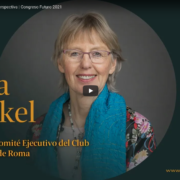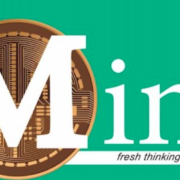By Jennifer Hinton 
My journey of working in the area of sustainable economy began when I wrote my MSc thesis on the circular economy plan in China back in 2007- 2008. The circular economy seemed like an ideal response to the sustainability conundrum. Economic activity could carry on, but with less resource use and pollution. However, I bumped into the inevitable contradictions between efforts to increase material circularity in order to reduce environmental impacts, on the one hand, and an ongoing commitment to endless economic growth, on the other. Shortly thereafter, I read an early version of Tim Jackson’s Prosperity Without Growth. His main message, that humans can prosper without constantly growing their economic activity, resonated with me. I had experienced the erosion of social cohesion in the United States related to increasing materialism (the work-shop-drop treadmill) and I had also experienced the same trend in rural China. In both cases, economic growth seemed to be doing more harm than good, as far as the environment and community cohesion went. The health of people and planet were being sacrificed for money.
I began looking for ideas and practices that could help societies transition away from the growth-driven economic system. Since then, I have been working on the development of a new way of understanding the economy through the lens of “relationship-to-profit”. Relationship-to-profit theory explains that the global sustainability crises which on the surface might seem disparate and disconnected, such as inequality and climate change, are actually very much interconnected, because they are driven by the same thing: the pursuit of private financial gain. Capitalist societies relate to financial gain (such as Gross Domestic Product and profit) as a measurement of success and progress and, thus, as an end in itself. This is embodied in economic institutions like for-profit forms of business, which allow for a financial gain purpose and the private distribution of profit to enrich owners. The dynamics of the for-profit economic system are strong and, contrary to narratives of “market failures”, it is accomplishing what it is designed to: private financial gain. But it is doing so at an enormous social and ecological cost.
Today, most people live in a for-profit type of economy. However, history shows us this is not the only way that economies and societies can be structured.
If we are to move in a more sustainable direction, societies need to change their relationship to profit and money. A promising building block for this is the phenomenon of not-for-profit forms of business, which are already operating around the world and in all sectors of the economy. An economy primarily composed of not-for-profit types of business would differ from the for-profit economy in many important ways. In the absence of private financial gain from business ownership, and with all businesses geared towards a social benefit purpose instead, there would be a lot more financial equality in a not-for-profit market economy. It would also be less prone to speculation, consumerism, environmental degradation, and political capture (a situation in which private interests have undue influence on policy-making). The not-for-profit way of organizing the economy is not a silver bullet – it won’t solve all of our problems – but it provides a sturdy foundation for solving them. Whereas trying to solve the issues of inequality, climate change, and biodiversity loss in the context of a for-profit economy is like swimming against a tsunami.
Relationship-to-profit theory does three important things for efforts to transform the economy. First, it explains why and how the current system is dysfunctional in clear and straightforward terms. Second, it lays out a concrete vision and pathway for a sustainable future that is more just and safe for all life on Earth. Lastly, the not-for-profit market economy model broadens the horizon of possibilities beyond the false dichotomy of capitalism versus the state-planned economy; a dichotomy that has contributed to high levels of political polarization over how societies should address the crises of the 21st century. This is why I felt the need to bring this work to the 36×36 project, through a peer learning exchange with my fellow participants. I am hopeful that the discussion of these ideas will contribute to real transformation on the ground.
Want to find out more about relationship-to-profit theory and not-for-profit models? Here are a few resources to check out:
Envisioning a Not-for-Profit World for a Sustainable Future (a short non-academic article)
A Not-for-Profit World beyond Capitalism and Economic Growth? (a semi-academic article describing how a not-for-profit market economy could take us beyond capitalism and economic growth)
A Circular Economy for Sustainability, not for Profit (a short non-academic article framing the circular economy from a post-growth perspective)
Fit for Purpose? Clarifying the critical role of profit for sustainability (an academic article outlining the system-wide sustainability dynamics of the for-profit and not-for-profit economies)
Relationship-to-Profit: A Theory of Business, Markets, and Profit for Social Ecological Economics (doctoral thesis putting forth relationship-to-profit theory)
How on Earth: Flourishing in a Not-for-Profit World by 2050 (a non-academic book putting forth a vision of a not-for-profit market economy)
Five Dimensions of Post-Growth Business (an academic article outlining the different dimensions of business that are important for a post-growth economy)
If you prefer videos, here’s a recorded presentation I gave on the Not-for-Profit World model for a general audience:















Leave a Reply
Want to join the discussion?Feel free to contribute!